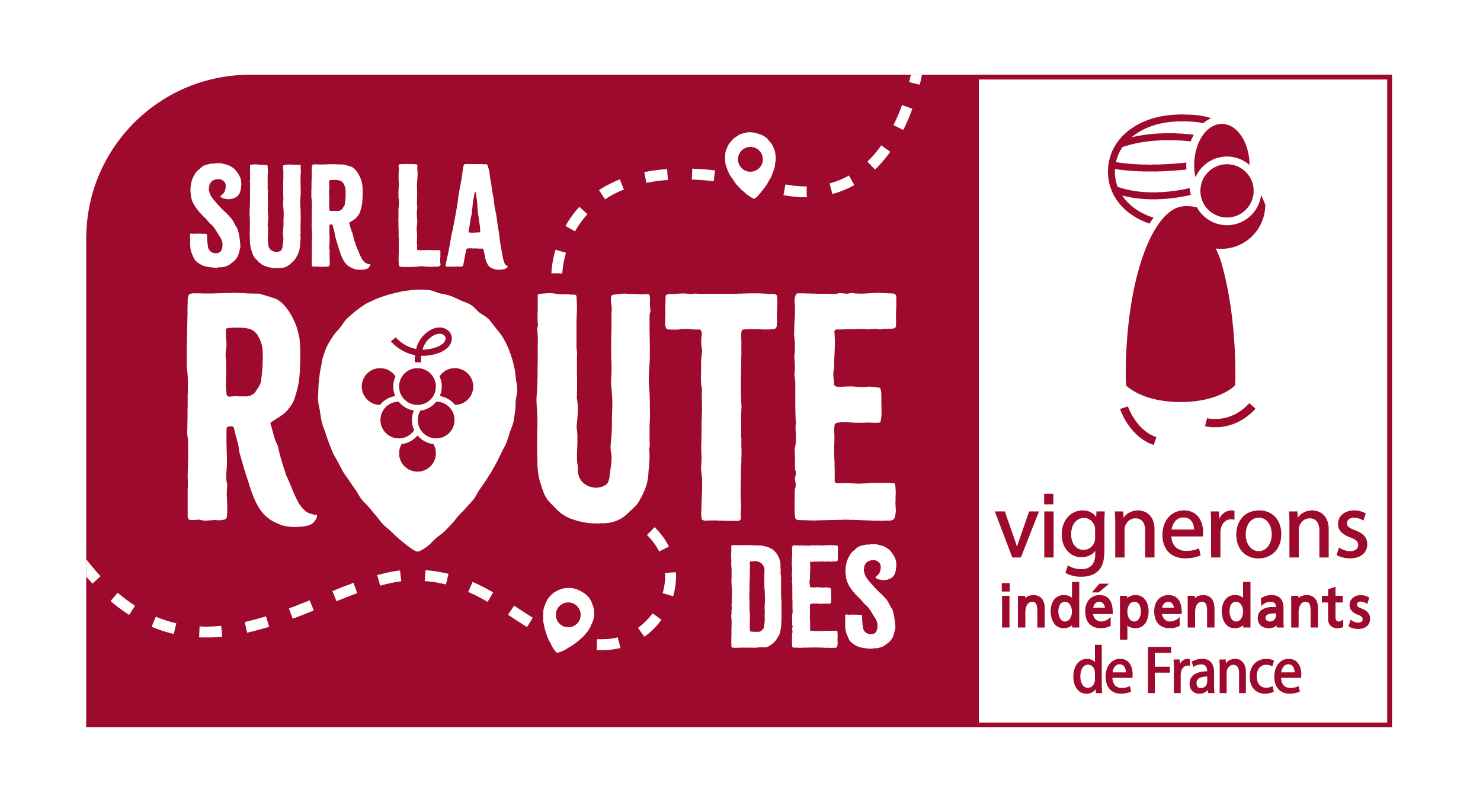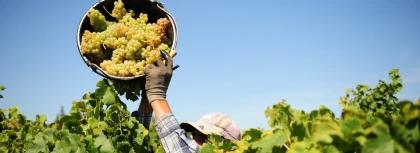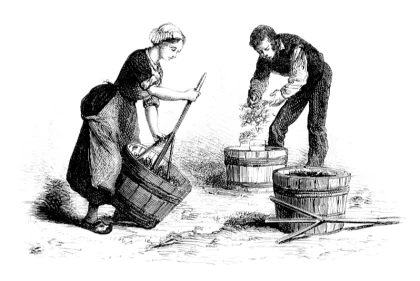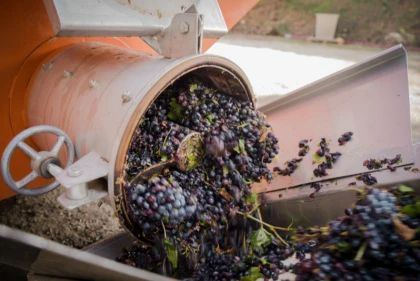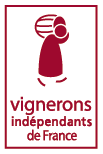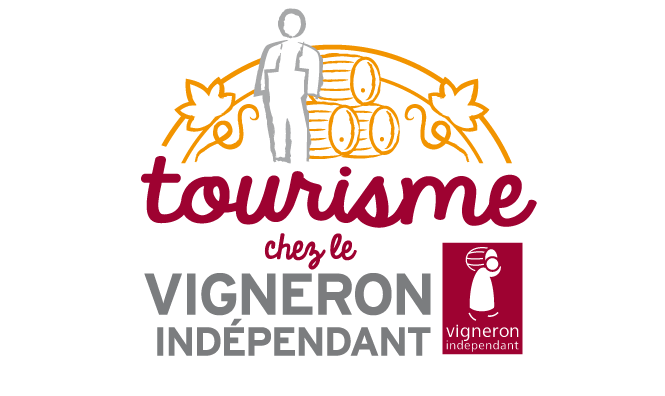The vine: the birth of wine
Before we can talk about winemaking, we need to understand the crucial role of the vineyard and the grape. The choice of grape variety is the first critical step. Grape varieties, or varietals, largely determine the character of the wine. Each grape variety has unique characteristics in terms of flavor, acidity, tannins and aromas. For example, Cabernet Sauvignon is known for its blackcurrant aromas and powerful tannins, while Chardonnay offers flavors of green apple and butter when aged in oak barrels.
The climate strongly influences grape quality. Regions such as Bordeaux, Burgundy and Napa Valley are renowned for their ideal climatic conditions, which enable optimal ripening of the grapes. Climatic conditions, such as sunshine, temperature and rainfall, play a crucial role in the development of grape aromas and flavors. For example, a warm climate can produce very sweet grapes, while a cooler climate favors acidity and freshness.
Viticulture encompasses all the agricultural practices used to grow grapes. This includes pruning, canopy management, irrigation and protection against disease and pests. These practices aim to produce healthy, high-quality grapes ready for vinification. Pruning, for example, controls vine growth and ensures good aeration of the bunches, thus reducing the risk of fungal diseases.
The harvest: the starting point
The harvest is when the grapes are picked. The timing of this harvest is crucial, as it affects the concentration of sugars and acidity in the grapes. Harvesting too early can produce wines that are too acidic, while harvesting too late can produce wines that are too sweet. Grapes can be harvested by hand or by machine, each method having its advantages and disadvantages. Hand-harvesting allows more precise selection of the grapes, while machine-harvesting is faster and less costly.
Harvesting at night is a common practice in warm regions to preserve the freshness of the grapes. By harvesting grapes at night, winemakers minimize oxidation and preserve the fruit's delicate aromas. What's more, fresh grapes are easier to handle and transport.
Crushing and destemming
After the harvest, the grapes are generally crushed to release their juice. Crushing used to be carried out on foot, but today it's mainly done by machines. De-stemming, which involves separating the grape bunches from their stems, is also an important stage. Stems can impart undesirable flavors to the wine if left in the tank. Gentle crushing is essential to avoid excessive extraction of tannins from the seeds and skins, which can make the wine bitter.
White grapes are often pressed immediately after destemming to avoid maceration with the skins, which could impart color and tannins to the white wine. For red wines, on the other hand, maceration is crucial to extract color, aromas and tannins from the skins.
Fermentation: the magic happens
Fermentation is the phase when grape juice is transformed into wine through the action of yeast. Yeasts consume the sugars present in the juice and convert them into alcohol and carbon dioxide. There are two types of fermentation: alcoholic and malolactic. The former is essential for producing alcohol, while the latter softens the acidity of the wine by converting malic acid into lactic acid.
Fermentation can take place in different vats: stainless steel, concrete or wood. Each material brings specific characteristics to the wine. Stainless steel vats are neutral, preserving the purity of fruity aromas, while wooden vats add aromas of vanilla, caramel and wood.
Fermentation temperature is also a crucial factor. Low-temperature fermentation (10-15°C) is often used for white and rosé wines to preserve delicate aromas, while higher-temperature fermentation (20-30°C) is preferred for red wines for better extraction of tannins and color.
Maturing: the winemaker's patience
Maturation is the period of wine maturation, often carried out in oak barrels or stainless steel tanks. This stage allows the wine to develop its aromas and flavors. Aging in oak barrels can add notes of vanilla, caramel and wood, while aging in stainless steel tanks preserves fruity and floral aromas. The length of ageing varies according to the type of wine and the winemaker's desired style.
Wines aged in oak barrels can undergo micro-oxygenation, which softens the tannins and adds complexity to the wine. The choice of oak (French or American), the degree of toasting and the duration of aging are all crucial decisions that influence the wine's aromatic profile.
Bottling and ageing
Once aging is complete, the wine is filtered, stabilized and bottled. Some bottles of wine will continue to age for years, even decades, before being consumed. Bottle aging allows the wine to develop even greater complexity and depth.
Bottling must be carried out with care to avoid oxidation or contamination. Bottle storage conditions (temperature, humidity, light) play a crucial role in wine ageing. Proper aging allows aromas to mellow and tannins to soften, providing a harmonious and balanced tasting experience.
Winemaking is an exciting and delicate process that transforms simple grapes into complex and delicious wines. Each step, from vine to bottle, requires skill, patience and attention to detail. By understanding the steps involved in winemaking, wine lovers can better appreciate the work and passion behind every sip. Whether you're a curious wine lover or an aspiring winemaker, I hope this guide has provided you with valuable knowledge and a new perspective on the fascinating world of winemaking.
The main stages of winemaking include grape selection, viticulture, harvesting, crushing and de-stemming, fermentation, ageing and bottling.
The grape variety largely determines the character of the wine, including its flavors, aromas and tannins. Each grape variety has unique characteristics that influence the final profile of the wine.
Climate affects grape ripening. A warm climate can produce sweeter grapes, while a cool climate favors greater acidity and freshness. Renowned wine-growing regions often benefit from an ideal climate for vine-growing.
Aging in oak barrels adds complex aromas to the wine, such as notes of vanilla, caramel and wood. It also allows micro-oxygenation, which softens the tannins and enriches the wine's texture.
Malolactic fermentation is a secondary process that transforms malic acid into lactic acid, reducing the acidity of the wine and adding the buttery, creamy flavors often found in white and some red wines.
Bottle ageing allows the wine to continue to evolve, developing greater complexity and depth. Aromas mellow and tannins soften, offering a more harmonious tasting experience.
